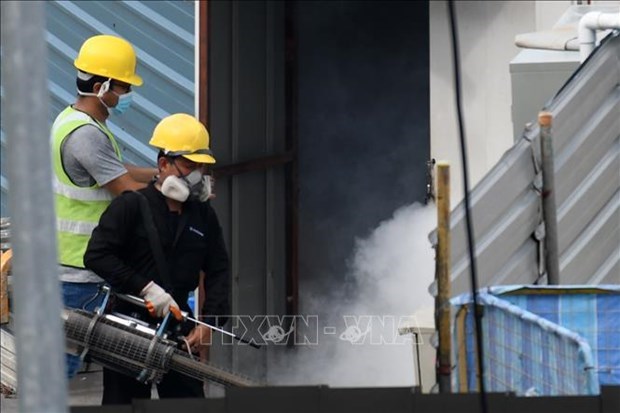 |
|
Workers fogging a construction site in Singapore to prevent mosquitoes.
|
In 2013, 22,170 people were infected and eight died of dengue. Twelve people have so far this year died in Singapore.
There are now 190 active dengue clusters. The biggest is in Woodleigh area, with 200 people infected, which is one of five large clusters with more than 100 infected.
The NEA warned that the hot and wet conditions suitable for the growth of the Aedes mosquito population are likely to last till October.
It outlined a confluence of factors leading to the recent spike in dengue cases. First, an increase in the less common Dengue virus serotype 3 (DENV-3) since the beginning of this year. This strain of virus was last seen in a dominant position in Singapore about three decades ago, which means there is low immunity in the local population and a rapid disease transmission, the NEA said on its website.
People who have been infected before are protected against only that strain of the virus, and not against the other three dengue strains.
Secondly, Singapore is entering the traditional dengue peak season, with the warmer weather facilitating faster multiplication of the Aedes aegypti mosquito and dengue virus, increasing the chances of dengue transmission, the NEA said.
The agency also reported a five-fold increase in dengue-carrying mosquito larvae detected in homes and common residential areas during the two-month Circus Breaker period compared to the two months prior.
NEA plans to provide over 300,000 bottles of mosquito repellent for distribution to patients at hospitals./.VNA